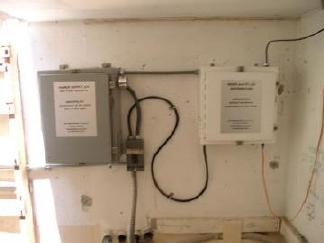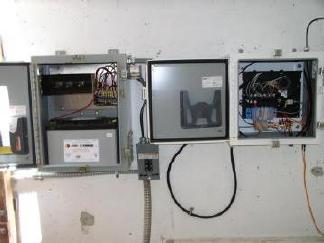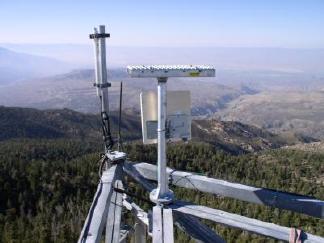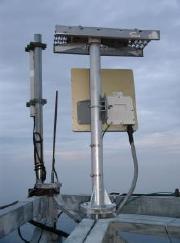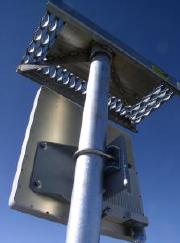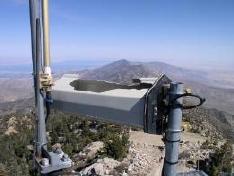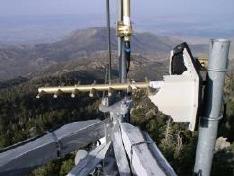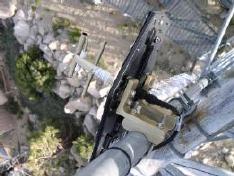|
June 2, 2008
Activation of the dedicated HPWREN backbone connection with Piñon
Flats Observatory
By D. Glen Offield, UCSD-SIO-IGPP
On May 21, 2008, a dedicated HPWREN backbone connection was
established between Toro Peak (TP) and Piñon Flats Observatory (PFO).
Information about PFO, a multi-discipline geophysical observatory
active since 1970, can be viewed at:
http://pfostrain.ucsd.edu/ and
http://pfostrain.ucsd.edu/pfo/.
Prior to this upgrade, PFO was one of nine remote stations
connected to HPWREN via multi-point radio service from Toro Peak. These
nine stations all shared the maximum 8 megabits-per-second half-duplex
service available from Toro Peak's North Cell. As PFO's traffic and
usage can be somewhat "dynamic" (there are 48 registered/active IP
devices presently at PFO), it was advantageous to provide a
dedicated point-to-point backbone connection to that site.
|
Wireless network connectivity from Toro Peak's North Cell,
which is one of three coverage areas surrounding the mountain.
|
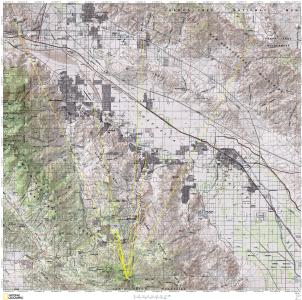
|
The original 2.4 GHz unlicensed point-to-multipoint service with PFO was
replaced with a new 5.8 GHz unlicensed point-to-point link supporting
36 Mbps half-duplex with FEC (forward error correction) and data
encryption.
The new radio/antenna installation at PFO was placed near the
underground Super Conductor Vault (SCV).
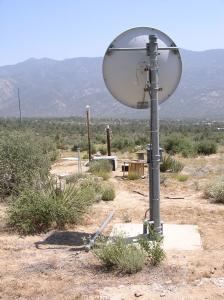
|
Left: Photo of new PFO telemetry installation with Toro Peak visible
(left of two peaks in top-left corner) as well as the entry hatch
to the underground Super Conductor Vault in the foreground.
Right: View of the new telemetry installation with the prior
installation visible in the background, right-of-center
|
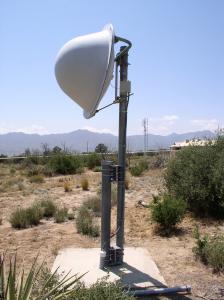
|
|
The electronics required to power the new PFO telemetry and to
distribute the connection to the central PFO LAN were installed
inside the Super Conductor Vault. This consists of two NEMA enclosures
mounted to the north wall.
|
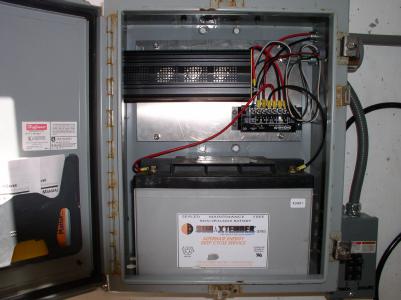
|
The grey enclosure contains the 90AH, 12V back-up battery with
associated AC-powered battery charger and surge arrestor protecting
the DC power.
|
|
The white enclosure contains the lightning arrestor for the PoE
connection to the outdoor radio, the radio's PoE inserter,
Ethernet-to-fiber converter and physical terminations/connections
with the 12-fiber (multi-mode) cable drop in that underground
vault.
|
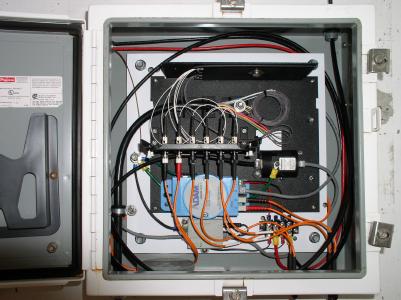
|
In 2004, the RoadNet Project upgraded the LAN distribution
at PFO from Cat5 cable to fiber-optic cable between seven of the
primary experiment sites. This was required not primarily for speed
but rather for electrical isolation between the multiple experiment
sites. As the region is highly susceptible to lightning strikes,
combined with the poor conductivity of the soil (fine decomposed
granite) and the fact that most sites had an Earth grounded sensor
(e.g. borehole seismometer emplaced below the mineral-laden water
table), instrumentation was being damaged almost annually. A strike
at a remote site would often traverse multiple sites en route to the
best Earth connection - damaging multiple experiments along the way.
The 2,480 feet of multi-fiber direct burial cable installed
mitigates the lightning damage as well as improves safety when
working on-site in stormy weather.
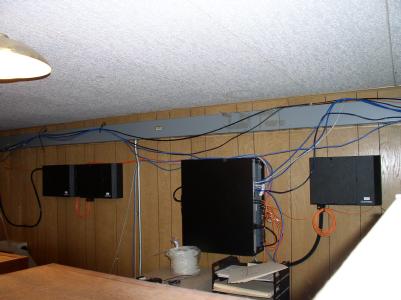
|
Photo of the central fiber optics LAN distribution system located in
PFO's Elliott Trailer (the four black boxes on the wall).
|
|
Fiber optics termination of the segment supporting the new
telemetry installed at the Super Conductor Vault.
|
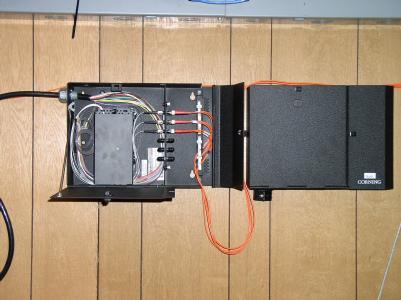
|
At the other end of the new telemetry service to PFO is Toro Peak. It is
here that the HPWREN connection is made.
For the climbers amongst us, Toro Peak ranks 17 out of 169 in prominence on
the "California Peaks with 2000' of Prominence" list and 39 on the
"Sierra Club Hundred Peaks Section". It is located on the Santa Rosa
Band of the Cahuilla Indian Reservation land and is the highest peak
on the Santa Rosa Mountain range at an altitude of 8,716' (2,657m).
The Cahuilla Indians named this peak "Wel'a'mo" and they believed (as
the does the author still) that it was a place of evil spirits.
The mountain is snowbound about 5 months of the year at which time
hiking, Sno-Cat, snowmobile or helicopter are the only practical
means of egress. During the warm season, a 4WD vehicle is required
to reach the radio shacks on the summit after 13.8 miles of
challenging dirt road.

Top: Toro Peak from the valley (center peak)
Right: Telemetry presence on the peak
|

|
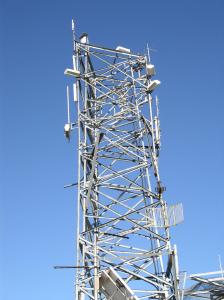
|
The tower where the new telemetry was mounted (the unit is the
small square panel seen at the very top, left)
|
|
Views of the new radio. Left: view of PFO (the complex of dirt
roads at the top, left). Middle: detail of the integrated
antenna/radio mount. Right: detail of the custom ice screen essential
to survival during the winter-spring transition.
|
|
The original 2.4 GHz point-to-multipoint radio system remains
installed for use as hot-standby, as a remotely activated fall-back
service in the event the new TP-PFO connection goes off-line during
maintenance or from failure. This is not an unlikely scenario as
Toro Peak often resembles a Popsicle in the winter, where melting/falling
ice mixed with 140 MPH wind gusts can produce substantial damage.
|
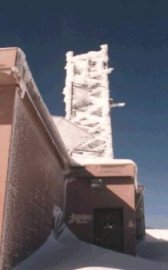
|
|
Some of our other antennas after a typical winter season.
|
This new TP-PFO backbone service upgrade benefits all users north
of Toro Peak (not just PFO) and further paves the way for an
observatory-wide secure WLAN/WiFi deployment on the PFO property.
That additional service would allow visiting colleagues temporary
access to the HPWREN Internet via standard wireless interfaces they
already possess. This could include VoIP service from any location
on PFO while working, which would be of benefit as there is no cell
phone coverage in the area.
|




